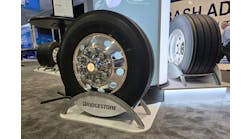My whole life, time has been my greatest adversary. In school and at dead-end jobs, it held me in place until the bell rang or the workday ended, and on summer breaks or vacations, it dragged me along despite my protest. Then in the military, although I counted down the days to my enlistment’s end, my job called for a split-second reaction time, whether it was donning fire response gear or picking up contacts, assessing threats, and triangulating ranges.
Then, when I found a pursuit I wanted to turn into a career—writing—time sped ahead, occasionally looking back with a mocking grin, while I huffed and puffed and barely kept up with various deadlines and life in general. Now, as editor-in-chief, deadlines I thought were insurmountable a few years ago seem laughably quaint. All that running made me stronger, but it took a heck of a lot of time to get there.
And it still does. You see, my hackneyed life hack was to simply divert personal time, mostly the portion for sleeping, over to work time. When you do that, you really do have all the time in the world.
After a year of that, though, this strategy’s negative aspects—chief among them backaches and burn out—have caught up with me. Now, it’s time to work smarter, not harder, which requires putting into action novel concepts such as delegating overall workload and putting more energy into training staff, as opposed to trying to do everything myself. I need to become a master of time management. And because managers within the transportation industry have their own sprints and marathons with clocks and calendars, let me share a few tips from what little I’ve gleaned to help you tack on some extra minutes and hours to your day.
Take time to organize your workstation
Saving time starts with being more efficient, and for that you may want to consider adopting a lean mindset and practicing the 5S pillars: sort, set in order, shine, standardize, and sustain. In the shop, this means keeping tools organized with shadow foam inserts for each tool drawer. This ensures certain sizes of wrenches are always in the same place, and if one is missing, you know you accidentally left it under the hood of your last job.
If most of your time is behind a keyboard, invest in a little preventive maintenance on your desktop and inbox. Think about how often you spend searching for a file or email. Apply the Set in Order pillar to these areas with properly named folders and files that can be searched with a keyword. Bookmarking frequently visited sites, like TMC’s online Recommended Practices Manual (or FleetMaintenance.com), can also shave some seconds off your searches.
Find time for training
First thing to note: Technicians will leave a company if they feel they did not get enough training to build new skills. Compare that to how much time and money is spent on finding and training a new hire. Next, ask yourself how productive the shop would be if everyone reached a certain level of diagnostics mastery or could perform alignments. Nearly every OE has some sort of virtual training, and you can always work with vendors to set up on-site training. The subject of a recent shop profile, Fleet Fast, excels here and can take on the biggest jobs despite being a small body shop. For them, speed and productivity are tied to the amount of training provided.
Become a technology early adopter
While being the first to beta test a piece of tech has its disadvantages as the bugs are worked out, keep apprised of as much of the new technology in your sector as possible and make calculated investments. This again helped Fleet Fast when they implemented PPG’s AdjustRite estimating system. Similarly, other fleets used tech to monitor wheel ends to catch thermal events or partnered with vendors to analyze used engine oil and extend oil drain intervals.
The next big thing may be augmented reality, as wearable computers are finding a home in the shop for next-level time management. These connected devices fit on a user’s head and include a microphone, speaker, display, and camera. Using the RealWear Navigator 500, which can be 100% voice-operated, a MAN dealership in Romania cut diagnosis time by 75% and reduced travel time by 50%. This is because the technician can instantly bring up schematics on the monocular display without leaving the truck and, for trickier troubleshooting, can remotely call up an expert who can share their eyes from a laptop and walk them through the repair.
Prepare for the future
I recently met up with my old boss, Travis Hessman, who warned me about working too long on various stories and pet projects involving giant fighting robots (I never got around to listening, though). He’s an acolyte of futurism, lean process, and, of course, is now even more of my boss as a VP. The last thing he said to me may be worth following: You can spend all the time in the world trying to be more efficient and eking out more productivity, but it’s not worth much if you don’t also step away, find a quiet spot, and just let your mind drift to where your best ideas and innovative practices hide.
“You have to slow down and think,” he said. “Otherwise, you spend your whole life firefighting.”




